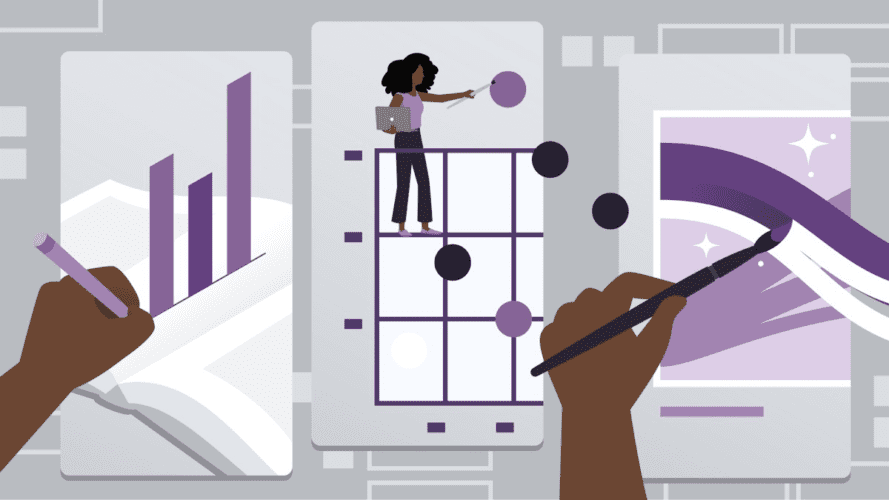Business
Engaging Data Storytelling: 5 Best Practices Using Data Points

Data storytelling is essential for organizations to make decisions based on facts and share what they mean with their audiences. Crafting compelling stories from statistics that can capture people’s attention is becoming increasingly necessary at this time.” Mastering data storytelling would enable individuals to unleash the potential of data, using it to impact people or bring about change by creating stories from meaningless figures.
In this blog post, we’ll discuss five data storytelling best practices to create engaging and insightful narratives for any audience. Properly incorporating these methods into your data presentation approach can capture attention, improve understanding, and inspire action.
Table of Contents
Importance of Data Storytelling
Data storytelling makes data easier to understand and more engaging. Some key reasons why data storytelling is invaluable include:
- Humanizes data – Stories add context and emotion that resonate with audiences, bringing data to life.
- Captures attention – Narratives are simply more interesting than numbers and text alone.
- Improves recall – Audiences remember stories better than raw statistics and bullet points.
- Inspires action – Stories motivate and spur audiences to make data-informed decisions.
- Builds trust – Stories show the human impact of data rather than just presenting facts.
Incorporating storytelling elements into data presentations makes the data more approachable, memorable, and impactful. Data alone struggles to achieve these ends. That’s why using compelling narratives should be central to any data strategy.
Data Storytelling Best Practices
The foundation of any data story is having meaningful data points to weave into the narrative. The following five best practices will allow you to showcase data in narratives effectively to create engaging stories that educate and inspire audiences.
1. Know Your Audience
The first key to impactful data storytelling is clearly identifying your audience. Data stories should resonate specifically with the intended viewers. Defining details like the audience’s background, existing knowledge, interests, and goals will shape how data is presented and contextualized.
For example, a story on sales data for executives focused on growth strategies would look entirely different than a data narrative for regional sales reps concentrated on their local metrics. Keep the audience foremost in mind when drafting data stories.
2. Focus on a Clear Narrative
Every data story needs a compelling and cohesive narrative arc at its core to engage listeners and drive the insights home. Even with perfectly visualized data displays, lacking an exciting storyline risks the audience disengaging and forgetting the key learnings.
Build your data presentation around a distinct beginning, middle, and end centering around answering one or two primary questions. Craft your narrative to highlight important trends, patterns, or surprises uncovered in the data to hook and educate the audience.
3. Use Visuals to Enhance Understanding
While striking narratives are essential, you must showcase the data visually to capitalize on data storytelling fully. Charts, graphs, infographics, and other visual displays should be seamlessly integrated to let the data shine and reinforce key points from the storyline.
Visual data representations simplify complex information, identify meaningful patterns, and improve memory and recall of core takeaways. Prioritize clear, accurate visuals that Distill complexity into intuitive formats aligned with the narrative flow. Avoid overwhelming the viewer with excessive or overly complicated charts.
4. Provide Context and Insights
The key ingredient that sets data storytelling apart from merely showcasing data is providing relevant context and sharing insightful conclusions. Numbers alone don’t drive decisions – the meaning we derive from them does.
Sprinkle thoughtful context throughout your storyline to help the audience interpret the data points correctly. Share insightful lessons, takeaways, and future implications highlighted by data trends. This high-value commentary is what transforms basic data into meaningful, actionable stories.
5. Emphasize Accuracy and Transparency
While compelling narratives and visuals enhance data’s impact, never compromise data accuracy or integrity solely in service of a better story. Misrepresenting data erodes audience trust and credibility. However, transparency around any data limitations or assumptions is essential.
Showcase clean, error-free data that supports conclusions drawn in the narrative. Be clear about any missing context, incomplete data, or methodologies that could influence interpretation. Treat transparency around limitations as an opportunity to build credibility through academic rigor and integrity.
Conclusion
Data Storytelling best practices are quickly becoming crucial to making an impact with data. While showcasing clean datasets visually does inform, narrating insights through engaging stories inspires change. However, developing compelling data narratives with visual and contextual enhancements requires moving beyond basic presentation tools.
Mastering the balance of data accuracy, visual design, and narrative development takes specialized tools designed for data storytelling.

-

 Business4 years ago
Business4 years agoHow to Do Long-Distance Moves with Children
-

 Business2 years ago
Business2 years agoThe Ultimate Guide To Thriving In Your Printing Franchise
-

 Business2 years ago
Business2 years agoExploring The Benefits And Challenges Of Restaurant Franchising
-

 Tech4 years ago
Tech4 years agoCyber Table That Will Change Your Life
-

 Business5 years ago
Business5 years agoIs Guest Posting a Good Inbound Marketing Strategy?
-

 Lifestyle2 years ago
Lifestyle2 years agoDallas’ Hidden Gems: 6 Must-Try Restaurants Off The Beaten Path!
-

 Lifestyle3 years ago
Lifestyle3 years agoTop 10 Restaurant Franchises In The US
-

 Business2 years ago
Business2 years agoTop 10 Reasons You Should Invest In A Coworking Franchise













Recent Comments